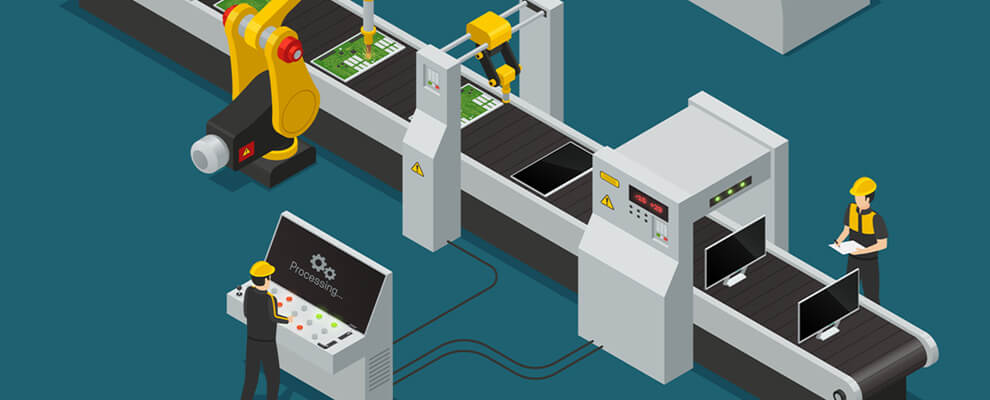
Augmented Reality and the Future of Auto Manufacturing
AR Technology Accelerates Auto Manufacturing Processes
Although augmented reality may seem completely new, it’s actually been present in the automotive field for several years now. Upon the launch of several AR systems, automotive companies like Ford quickly began running pilot programs to test the technology and find applications within their operations. Since 2017, Ford has been using AR at its Dearborn headquarters to visualize vehicles and iterate on their designs more quickly. What makes AR so valuable to automotive engineering?
To understand why AR has become so useful for the auto industry, it helps to understand how the typical design process works. The future of automotive engineering will be forever altered by the emergence of AR technology.
The Traditional Design Approach
Most car designs start out as simple sketches. These designs eventually turn into concept vehicles, which may eventually become full production models. However, to get to that point, automotive engineers need to actually build a full-size model of the car. Doing so with actual metal parts is expensive, so many vehicle designers make clay models to better visualize the car in a real environment. While these clay models aren’t functional, they allow engineers to evaluate aerodynamics and design constituent parts.
Nevertheless, clay models are labor-intensive and are not cheap to make. Automotive companies spend thousands of dollars and weeks making a model. More expertly crafted models can take up to a year to produce a 1:1 replica! Significant changes require a new model. Therefore, the clay model method creates a delay between iterations, which further adds to the R&D costs of a vehicle. Augmented reality is upending this method of car development.
The AR Design Approach
What if you could see a car in a real environment without having to build it with physical materials? That is essentially what AR technology provides. Instead of building a model out of clay or metal, a digital model can be superimposed on your surroundings, appearing in space as if it were really there. AR systems use headsets with tracking systems that can display digital objects in real time within a real physical space.
Imagining this can be difficult if you’ve never experienced AR before. Consider watching a video that adds special effects to simulate the AR experience. However, the impact of AR is easy to understand. Instead of spending thousands of dollars and man-hours to make models just to visualize the final production model, automotive companies can build digital models, place them into real spaces, and examine them as if they were really there.
How AR Will Impact the Future of Auto Manufacturing
AR is already reducing the time between iterations, allowing engineers to update their models faster and reach production in less time. By accelerating R&D, auto companies can save money on vehicle development. There is potential for AR to boost vehicle sales as well. Already, vehicle showrooms are using AR to help customers visualize their exact model, down to the color and extra options.
More importantly, though, AR is driving a much greater change in vehicle manufacturing. Model-based Engineering (MBE) uses a digital model to direct all manufacturing activities. The main vehicle model is used to visualize the car with AR, but it also includes every component in the vehicle. As the design is updated, so too are the car’s components. Parts suppliers can receive instant updates to adjust their purchasing and speed up production of components belonging to the master model.
Should You Adopt AR Technology?
Although major auto manufacturers have already adopted AR, many of the suppliers further down the chain have yet to do so. For some, it seems unnecessary as they will only be focused on manufacturing individual components. Others find the complexity of implementing such a system troublesome. However, there are benefits to using AR even if you’re a tier-1 or tier-2 supplier.
By being on the same page as the manufacturer, you’re able to understand the changes that are occurring and how your components should fit into the new model. Rather than developing systems and components in an information vacuum, you can more easily understand the manufacturer’s requirements. In addition, you may be able to find other contract opportunities. Perhaps you spot a part on the master model that you could also provide. So, what do you need to adopt this technology?
Microsoft HoloLens
The gold standard in AR right now is Microsoft’s HoloLens. HoloLens 2 was released several years ago, with HoloLens 3 potentially arriving on shelves in 2024. Microsoft has been relatively quiet about the future of HoloLens, but the next model is expected to be more modular and flexible, with updated display and processing capabilities. Now is a good time to get started with HoloLens 2 and learn the AR ecosystem before a new model is released.
AR and Model-based Engineering
AR can’t work without digital models. By adopting MBE software and tools, you can use those digital models in your workflow. Though you can build your own CAD models and use them with AR, a full MBE workflow will allow you to use the manufacturer’s master model and avoid accidental errors caused by differences between your designs and those of the manufacturer.
To implement this technology quickly, consider working with an experienced technology enabler. Contact SAAB RDS to schedule a meeting with one of our experts to learn how we can help you deploy AR effectively for your business.
